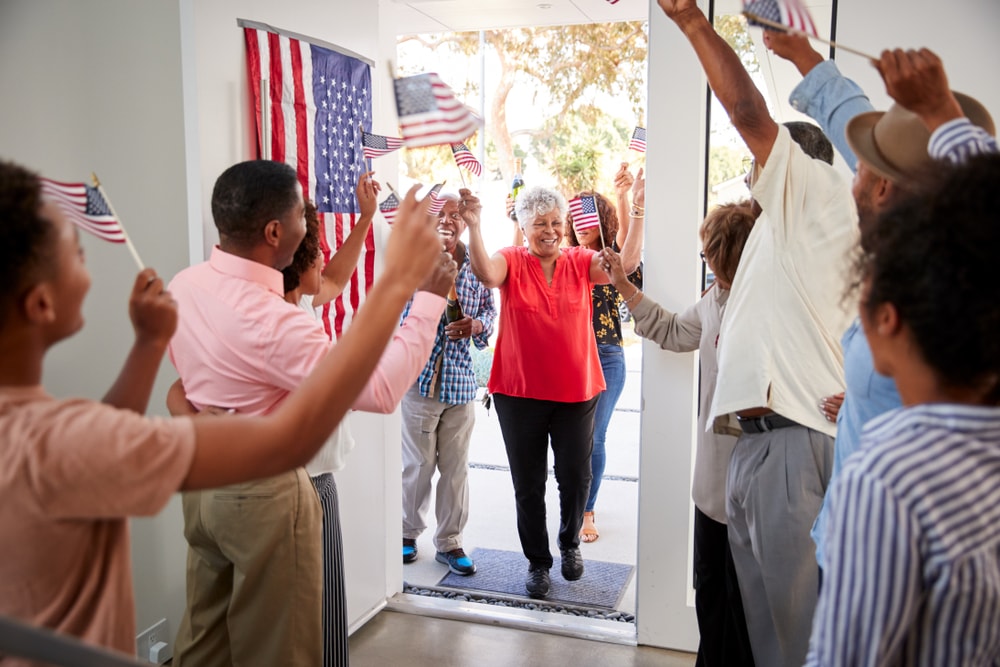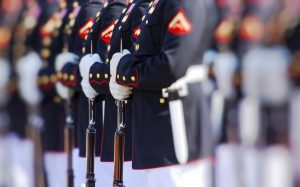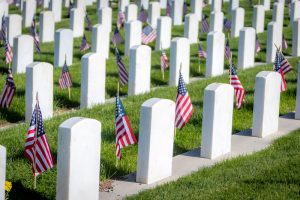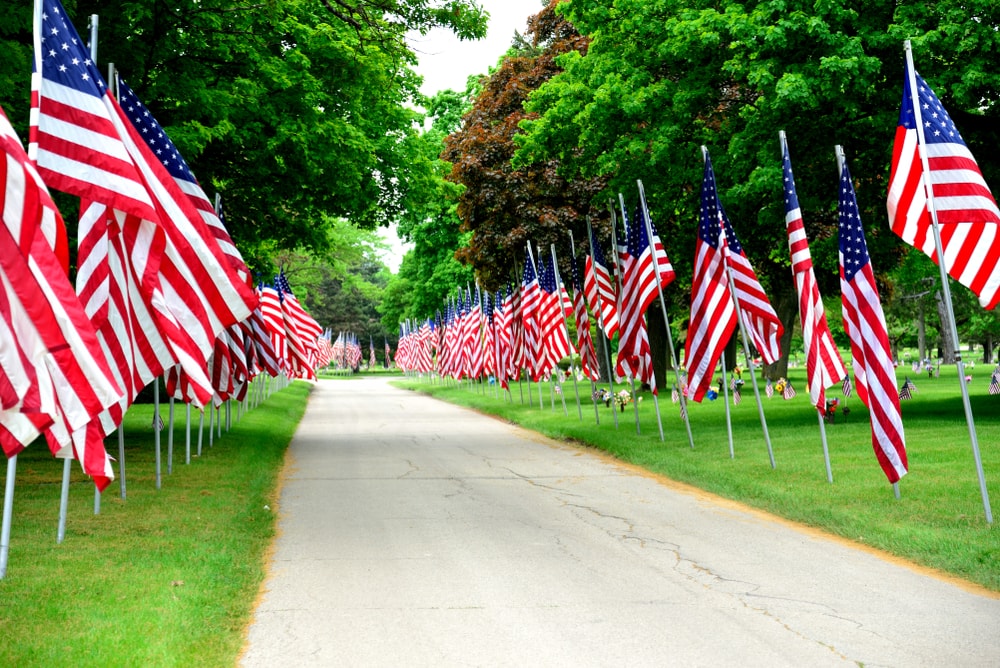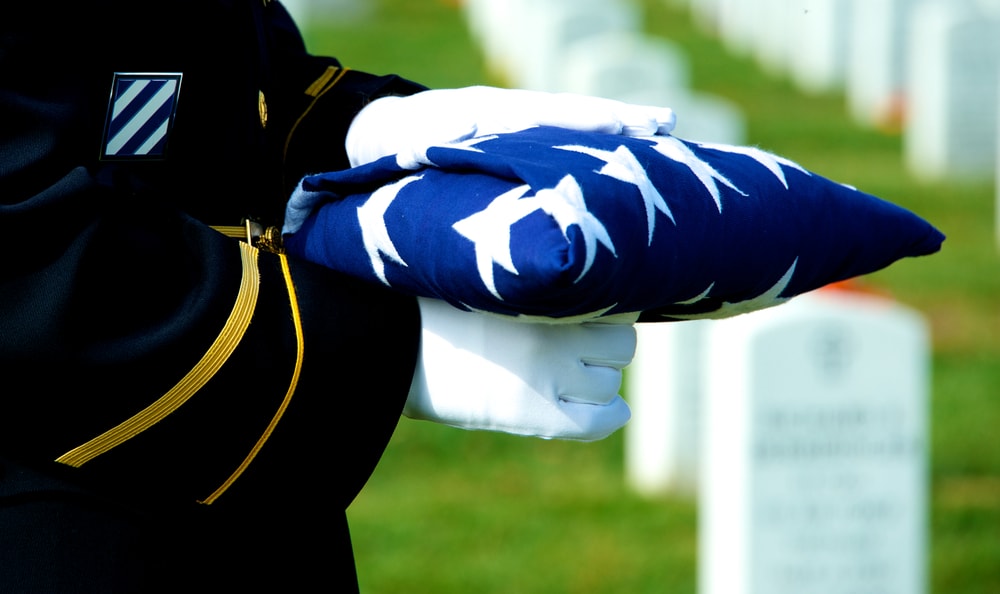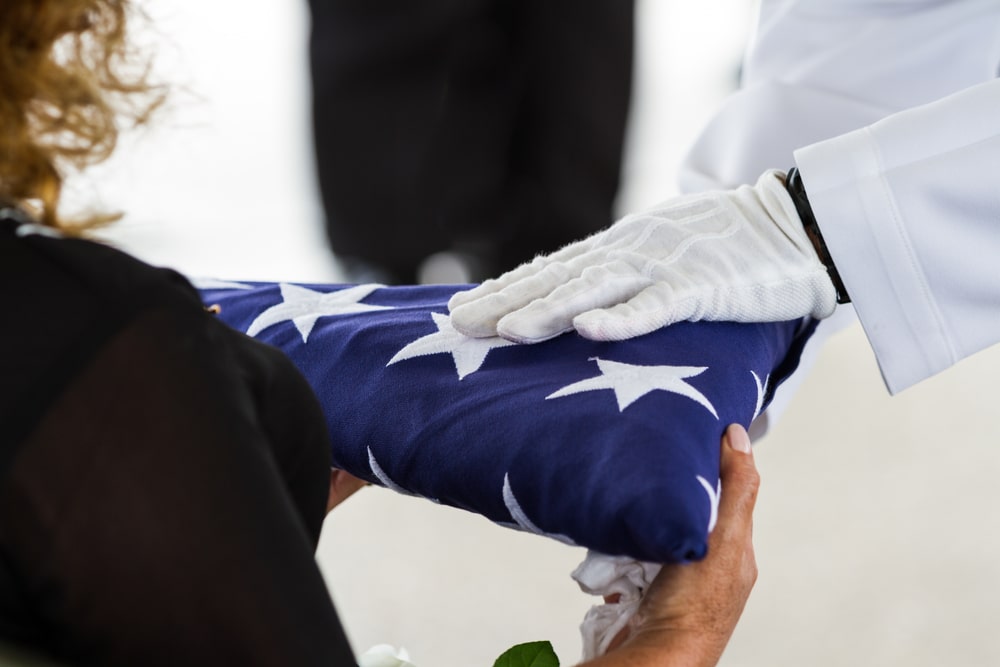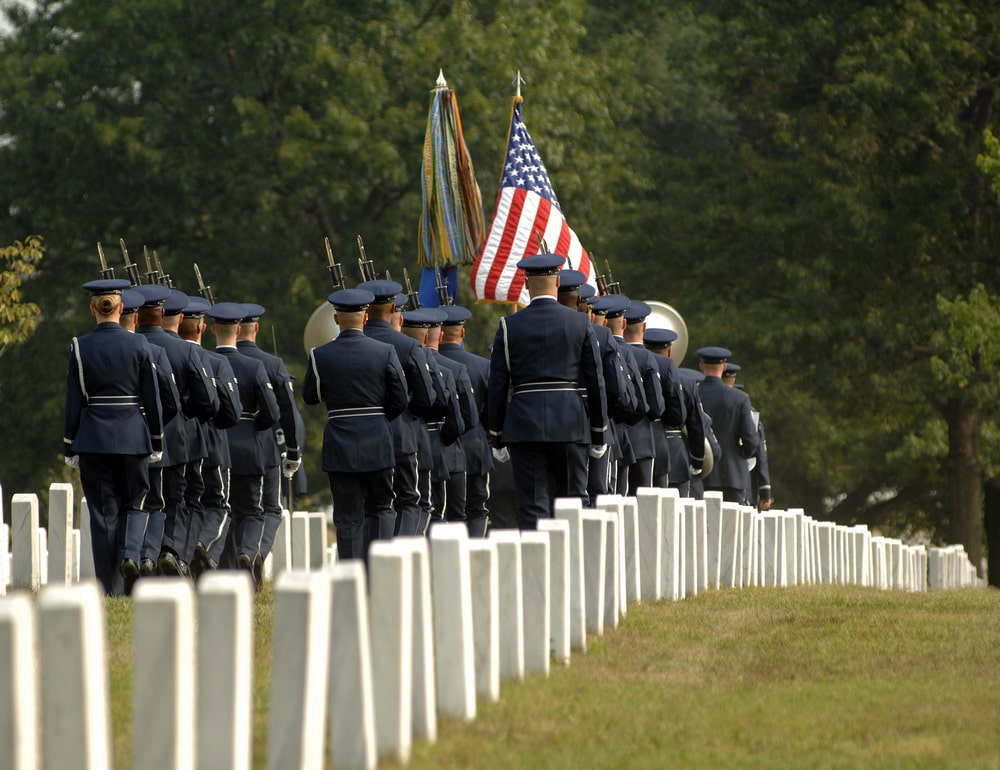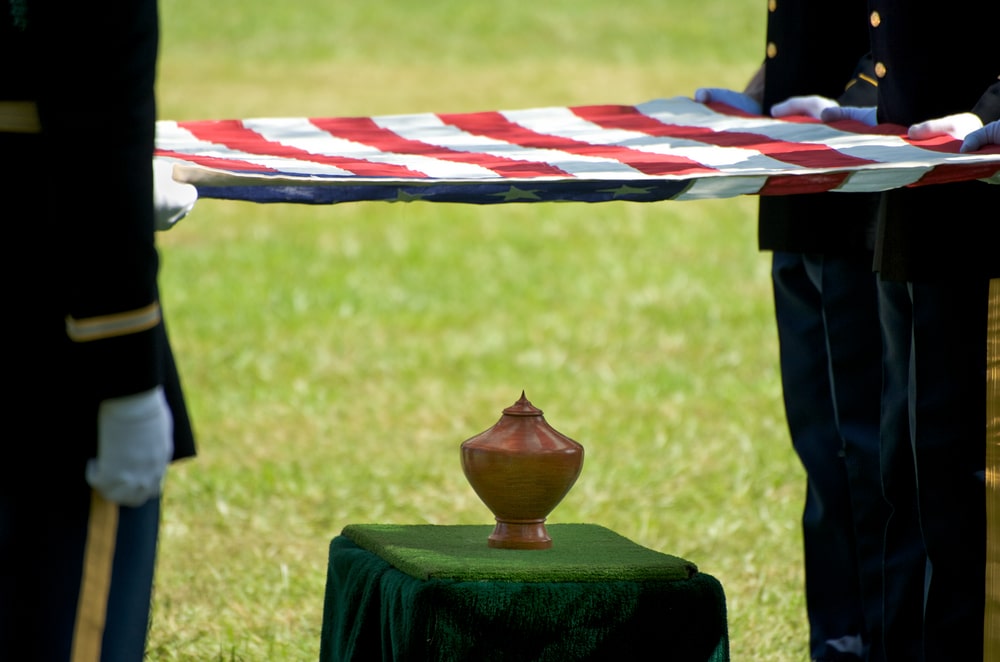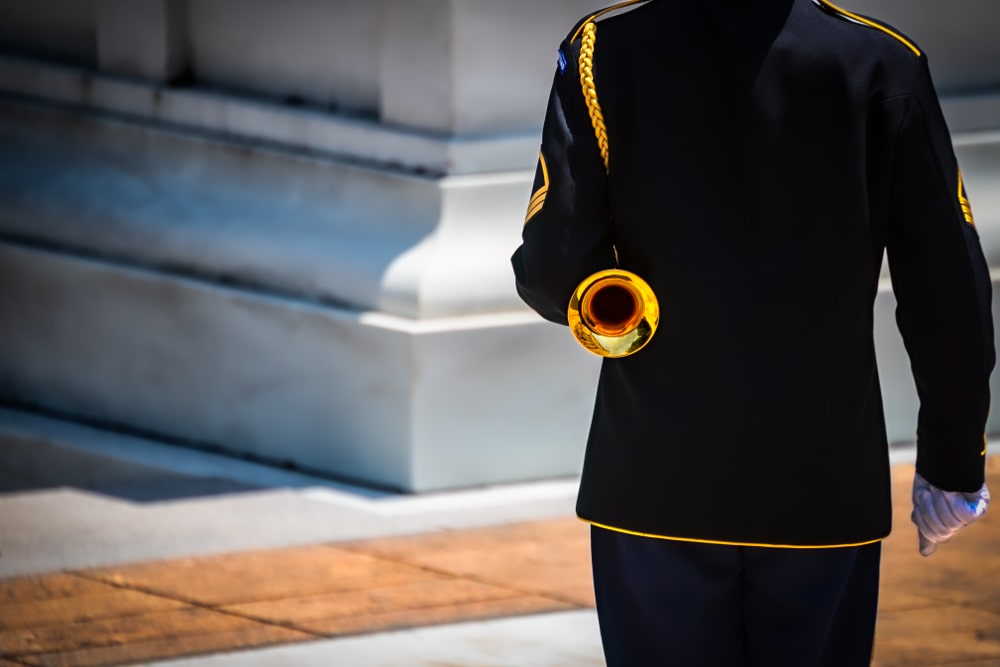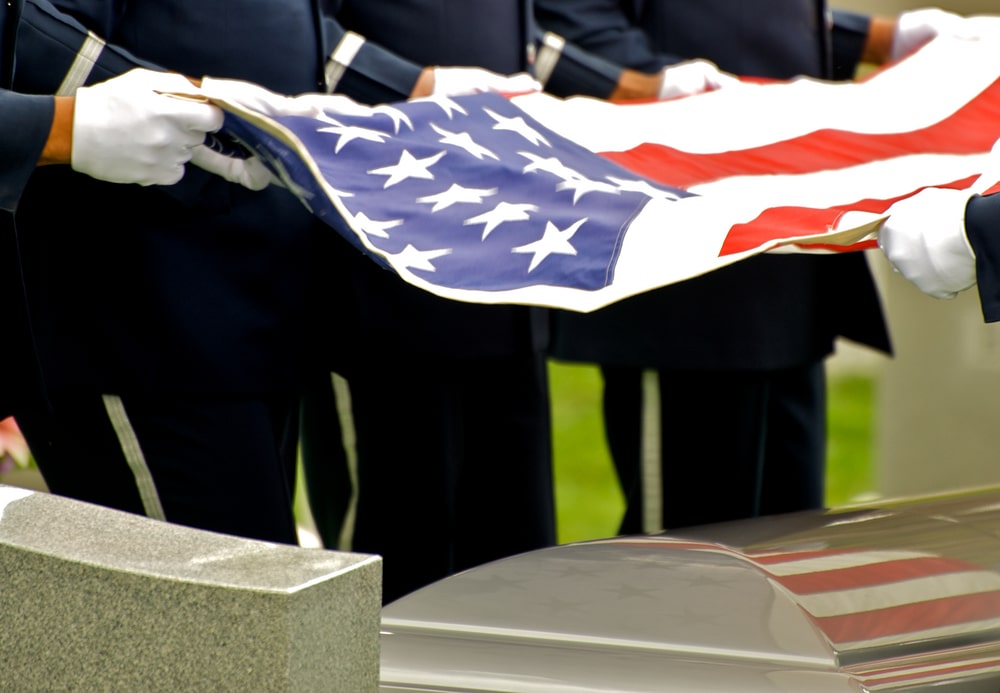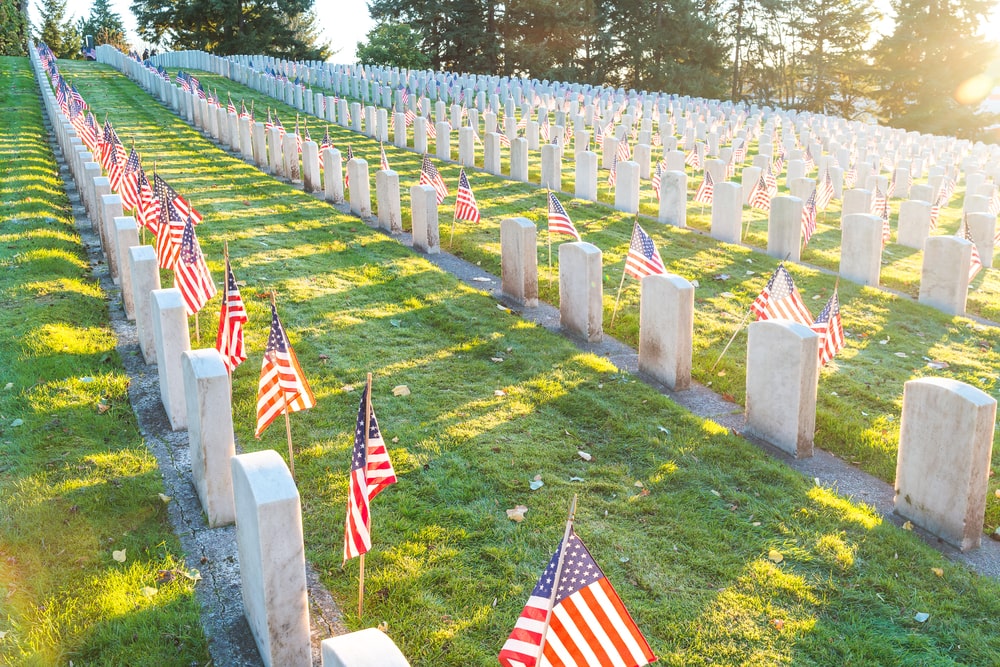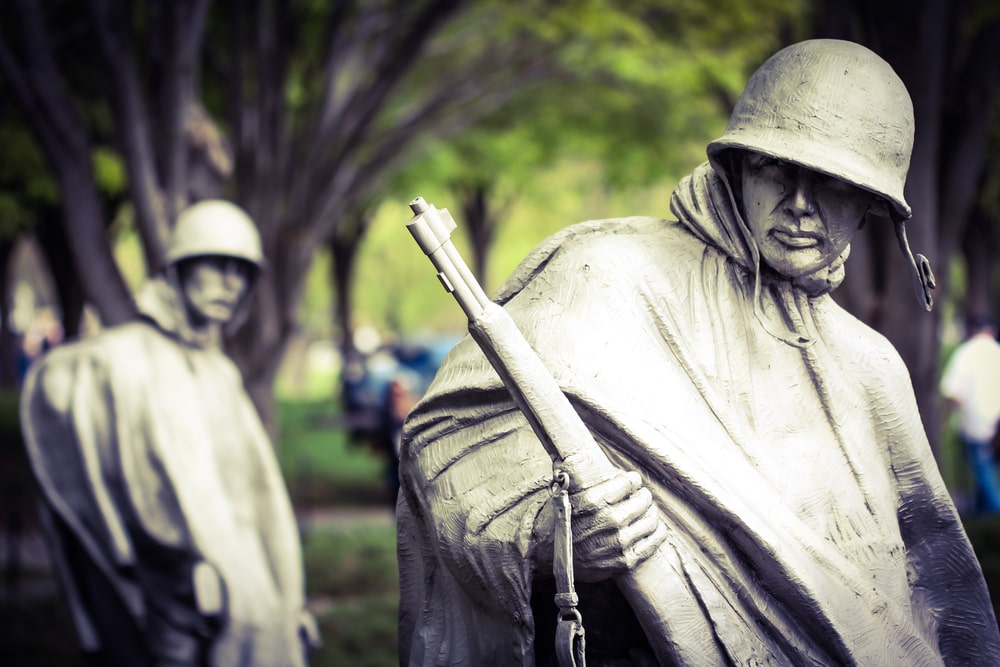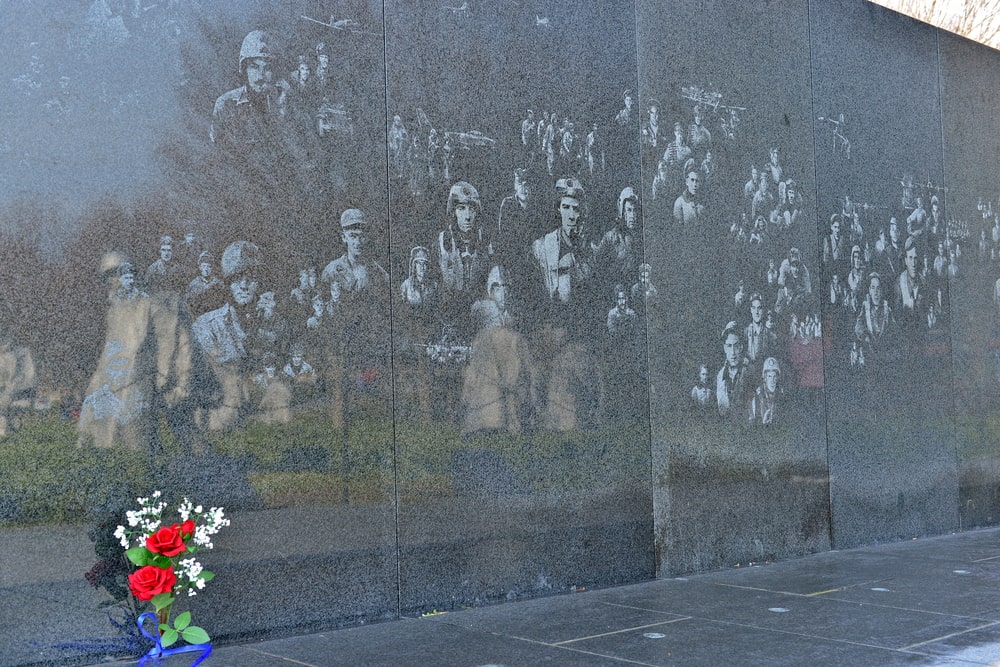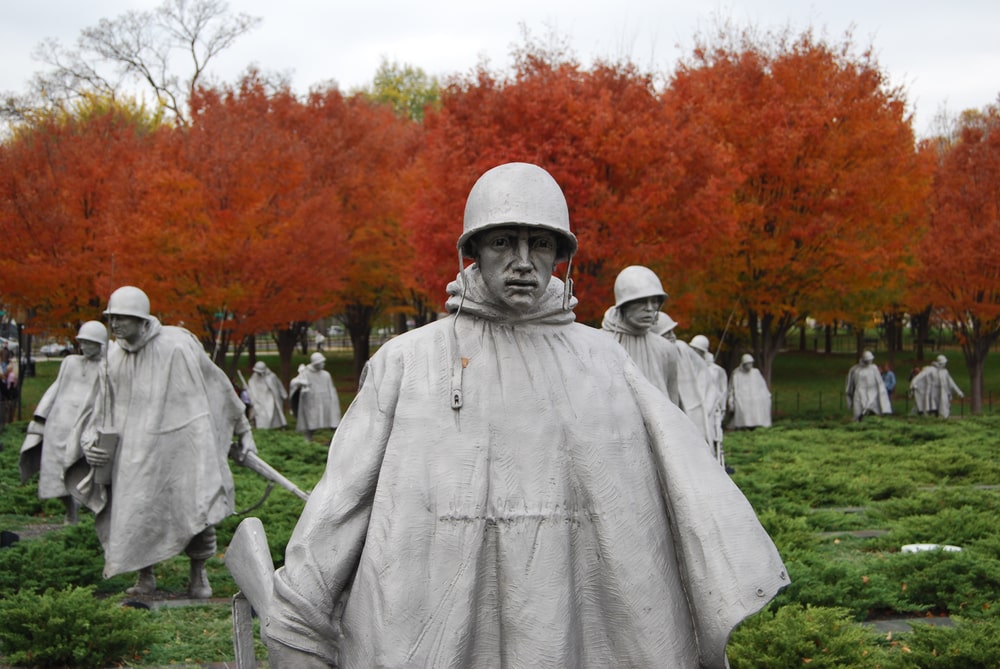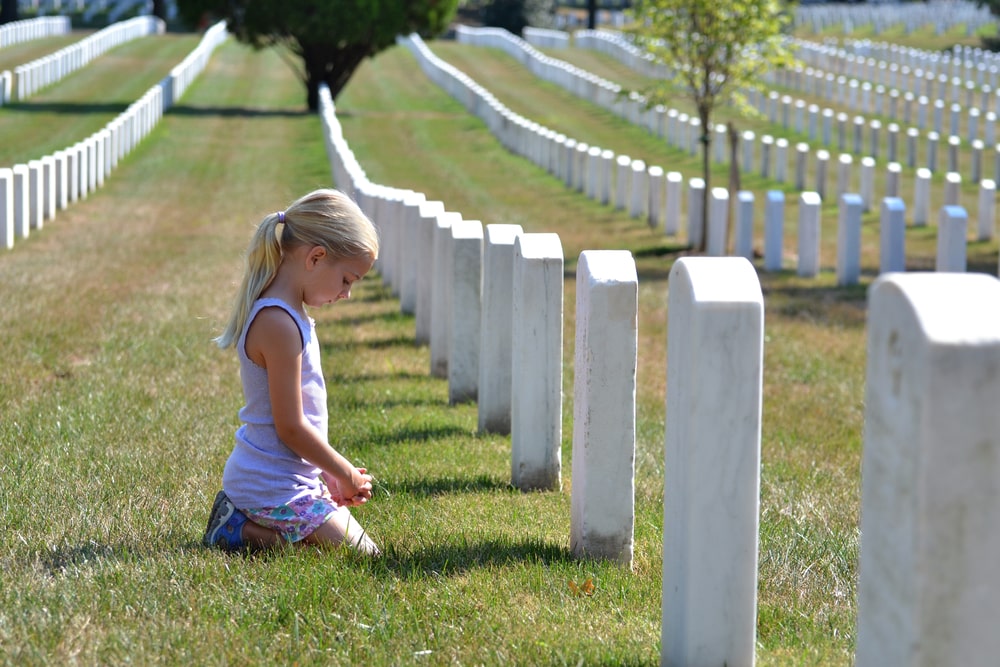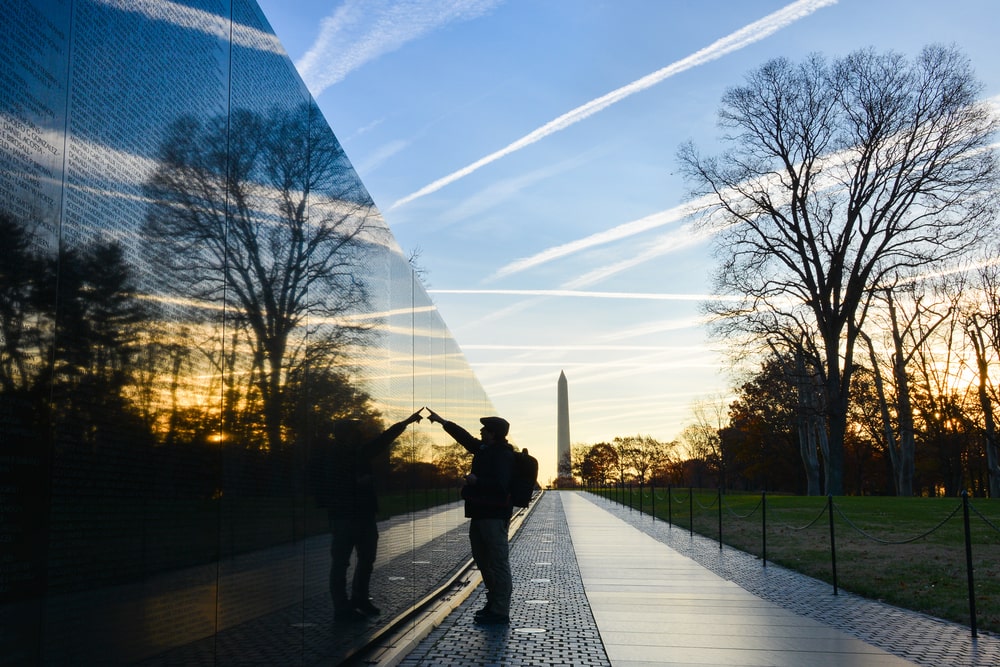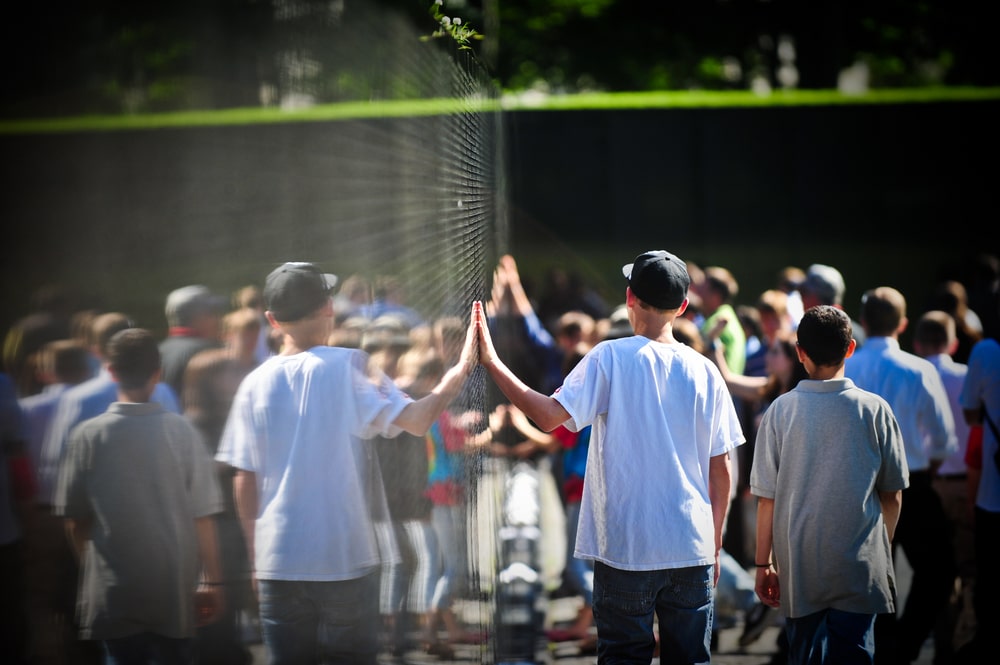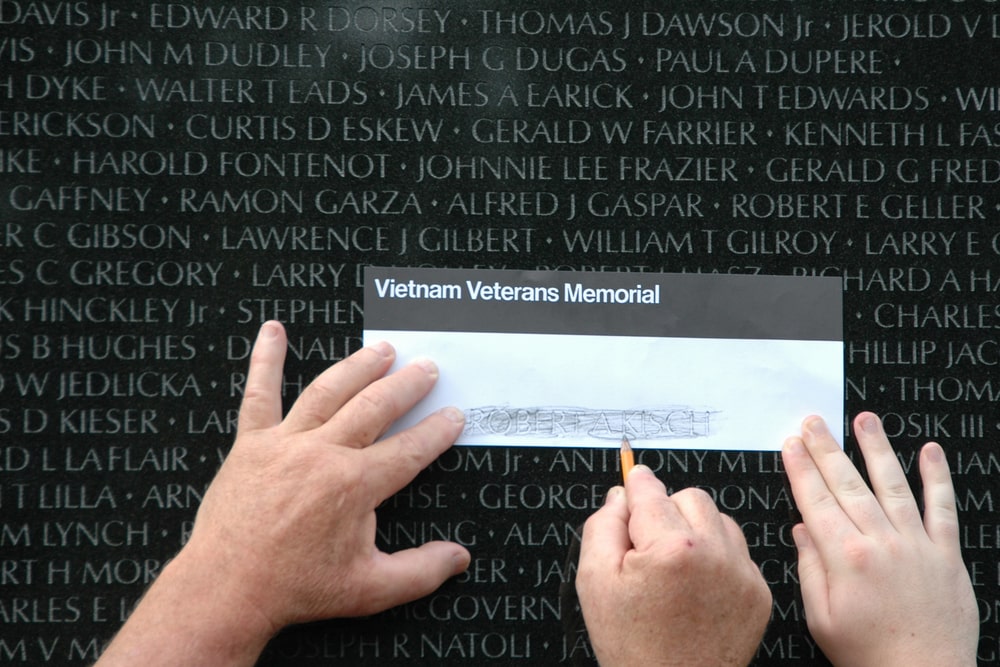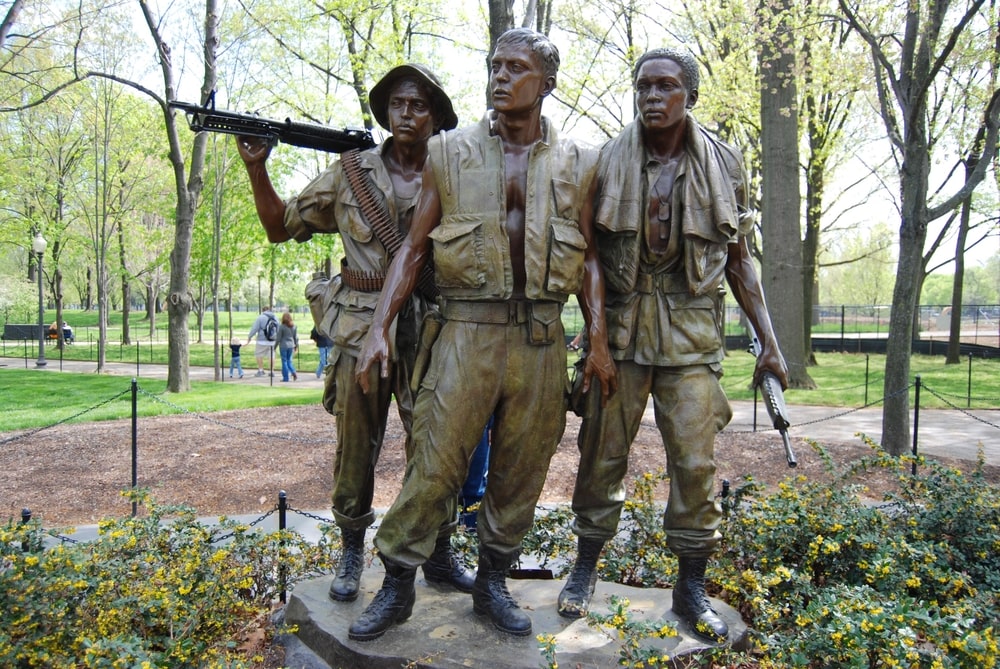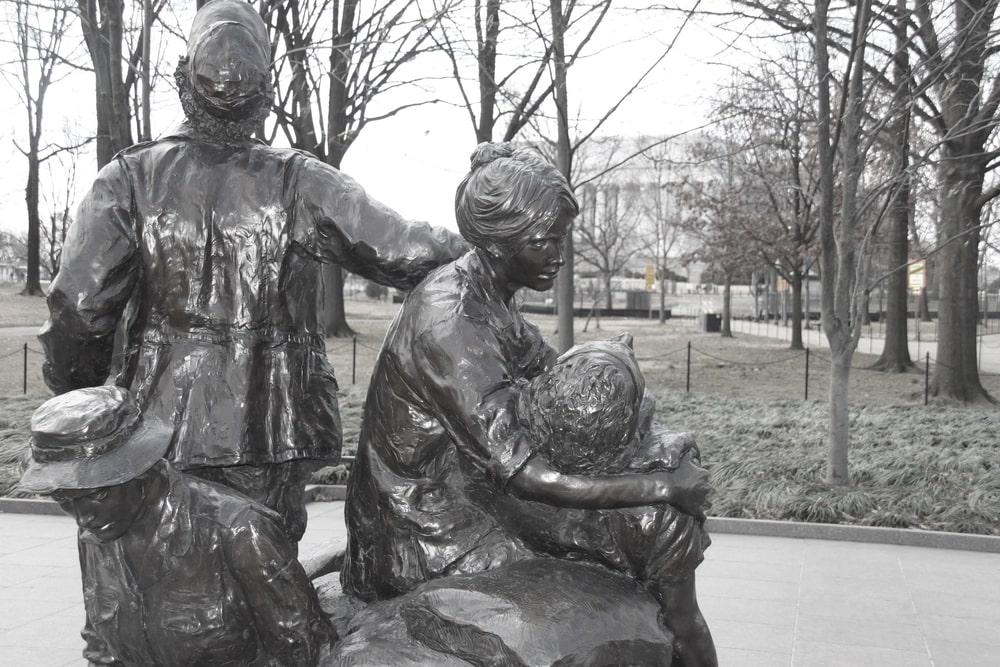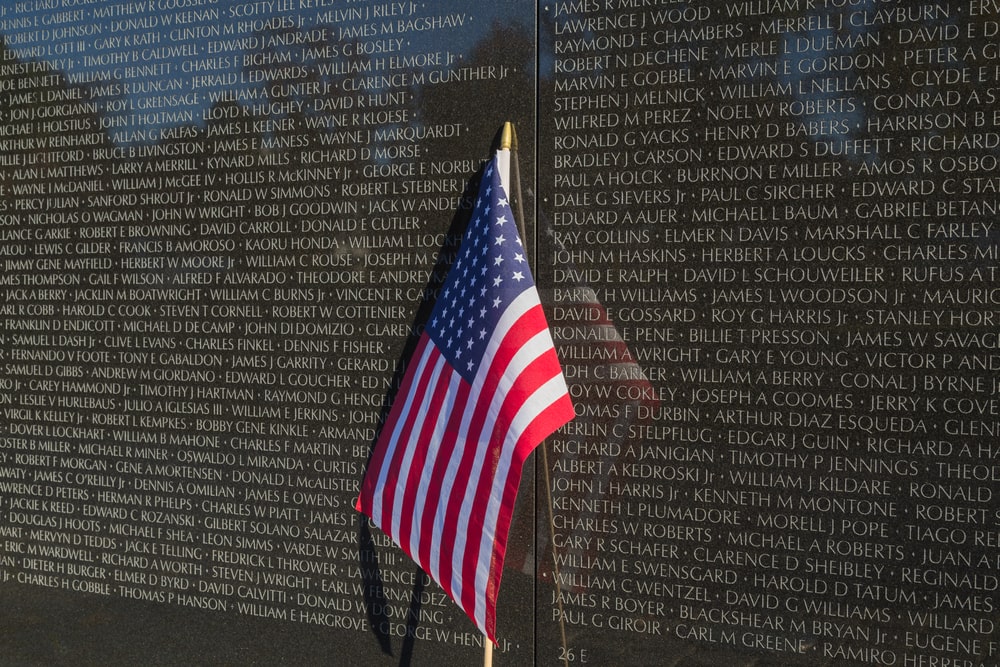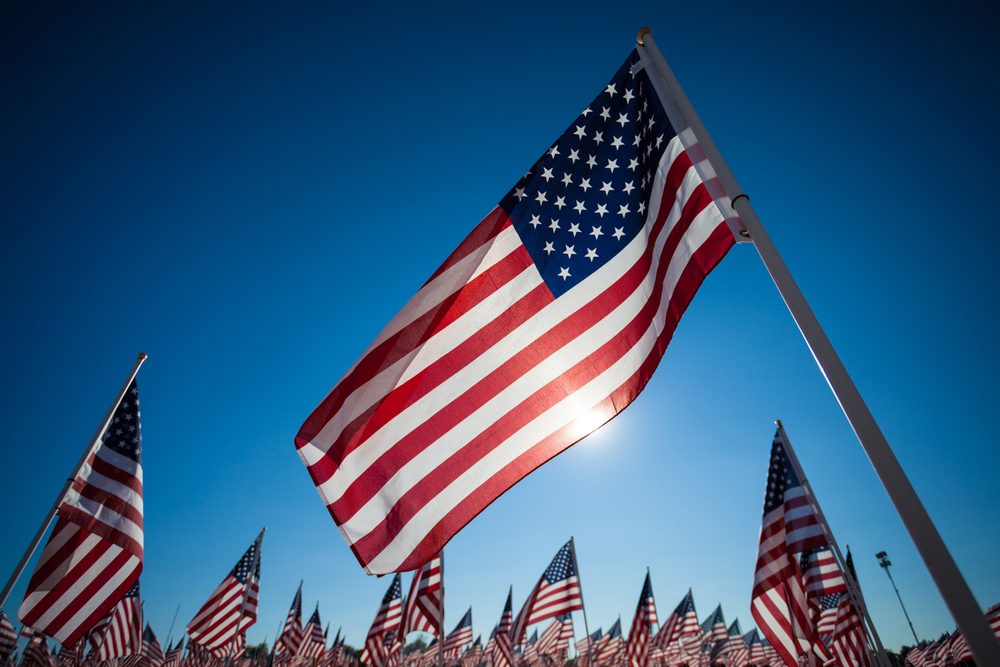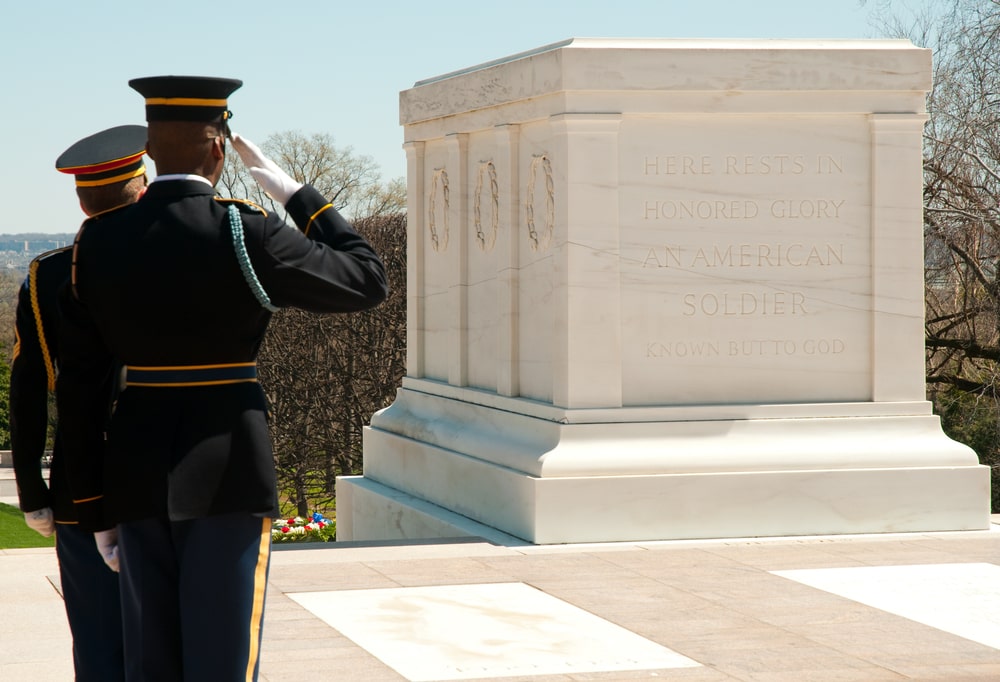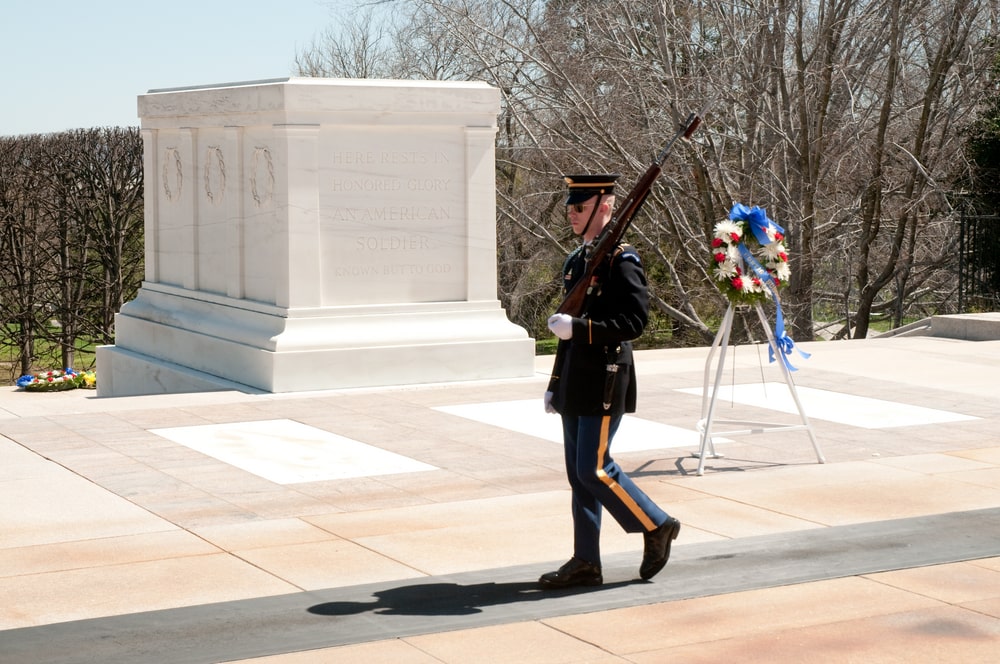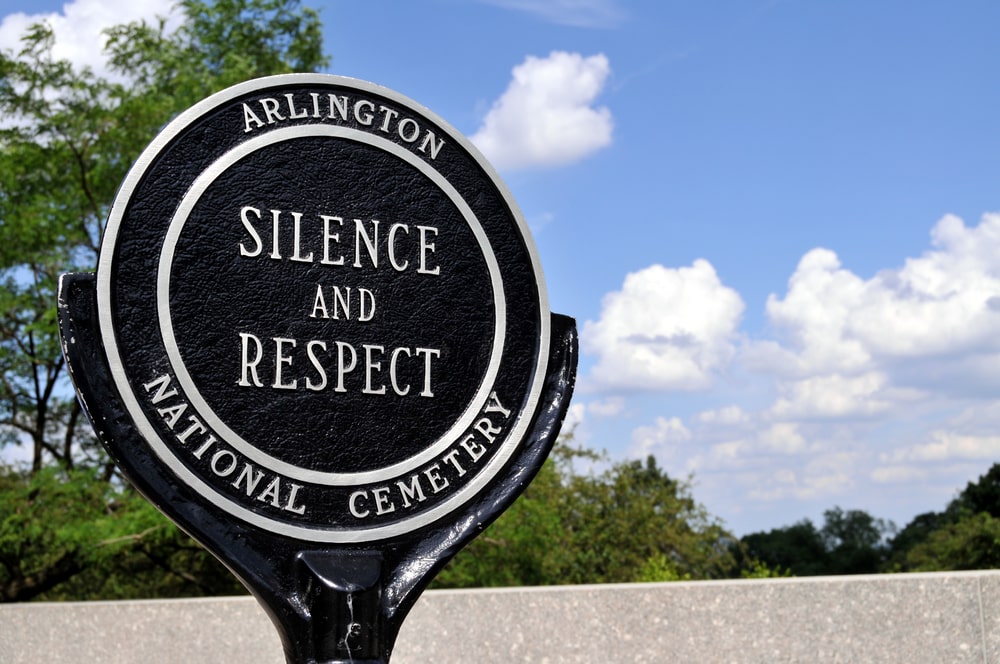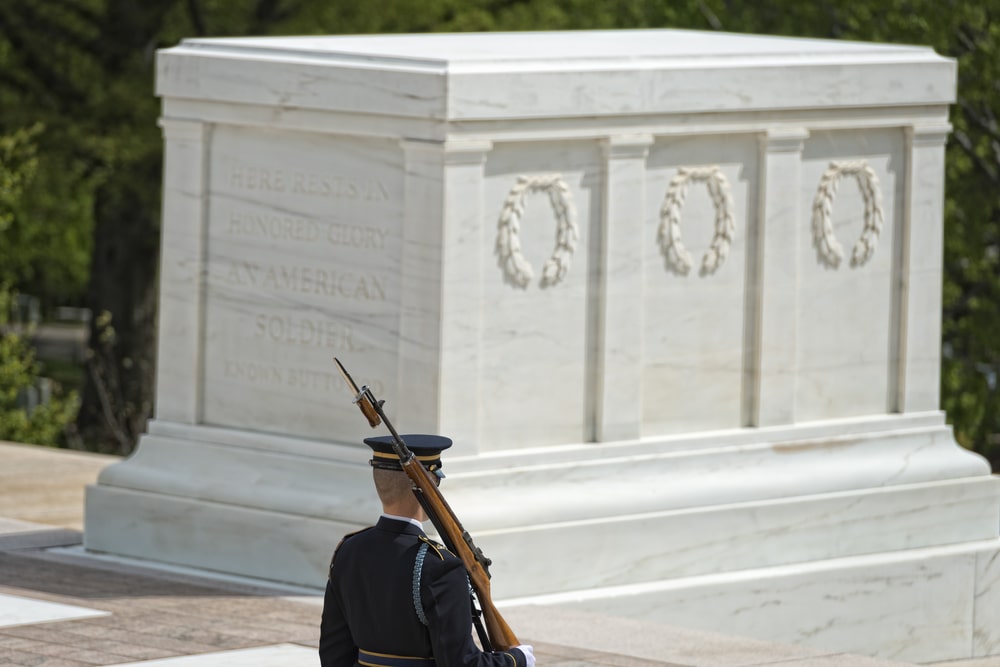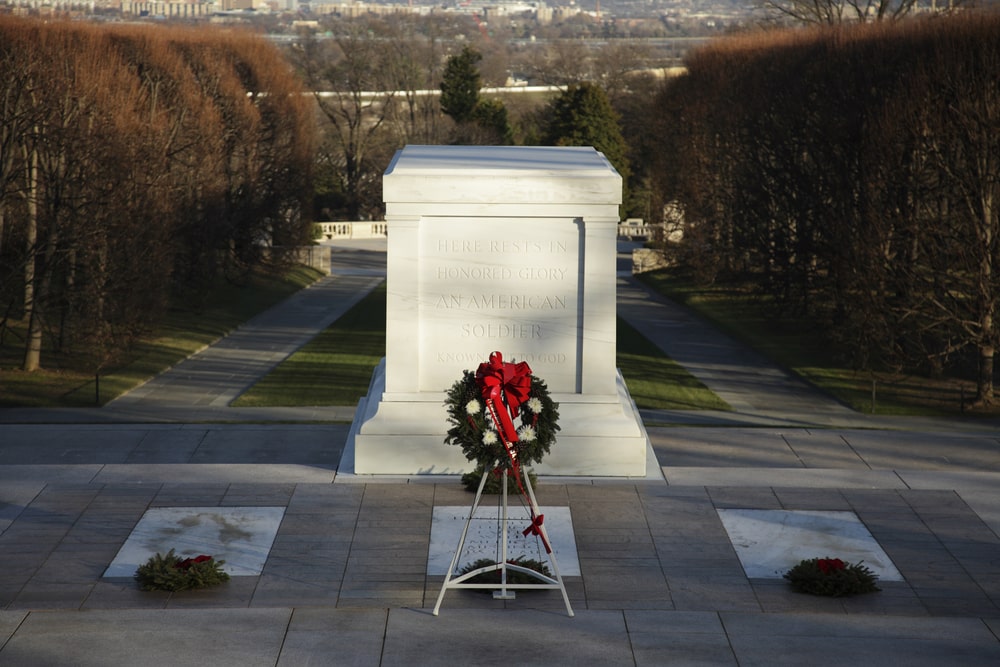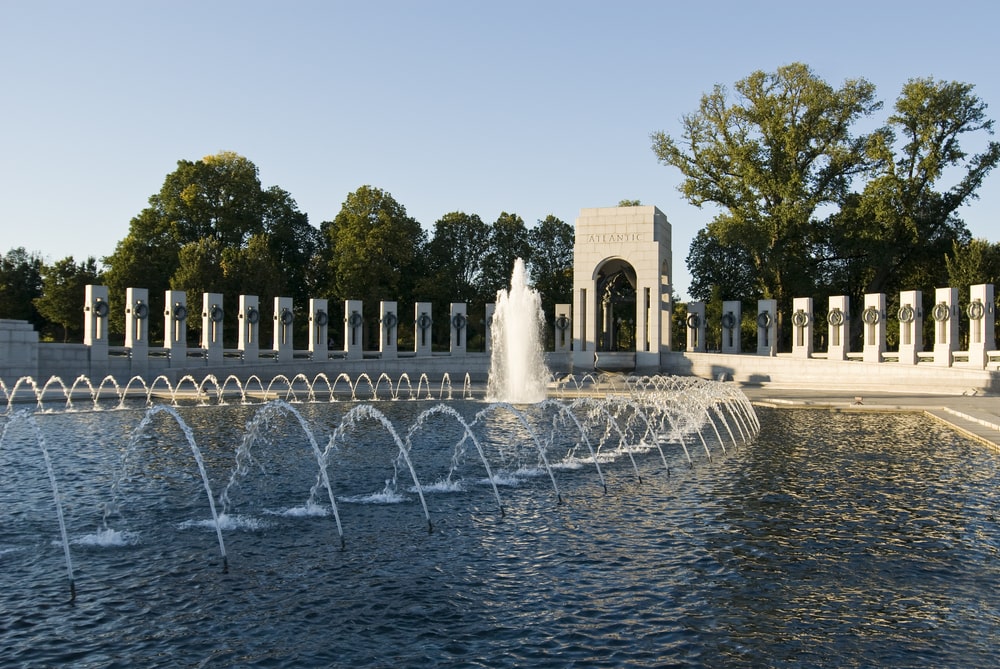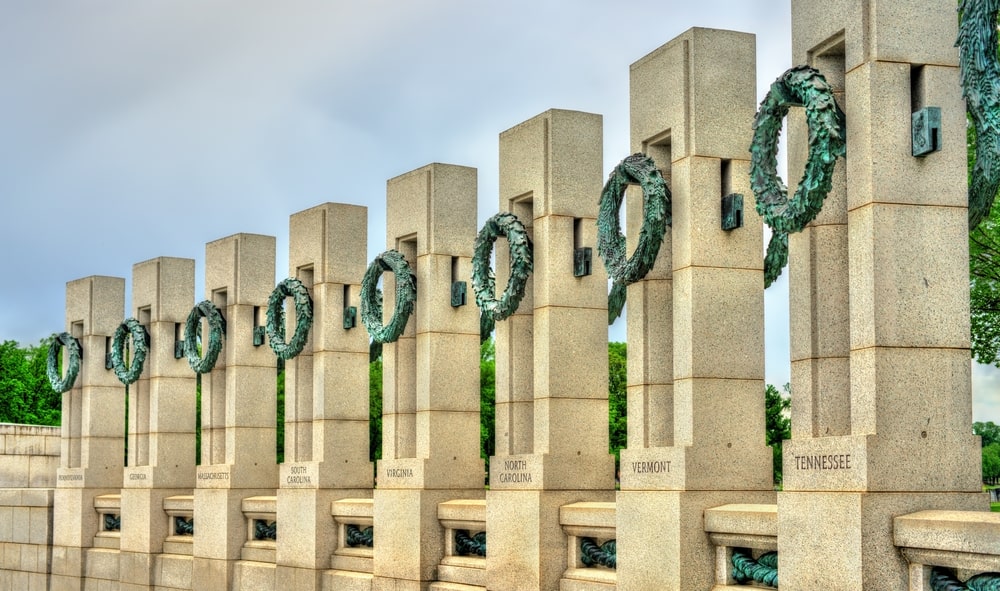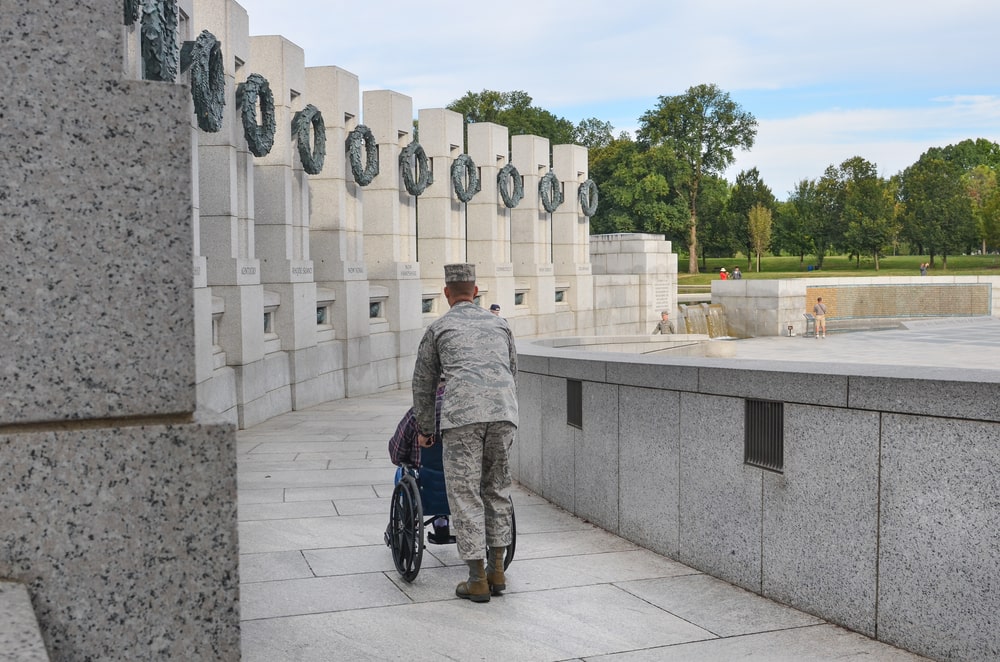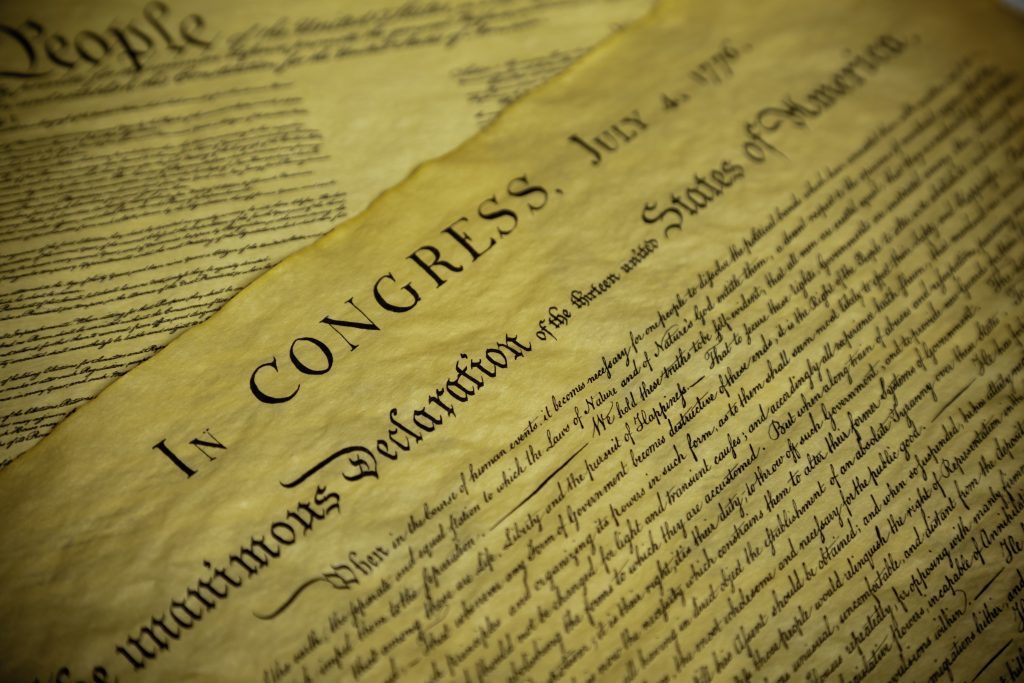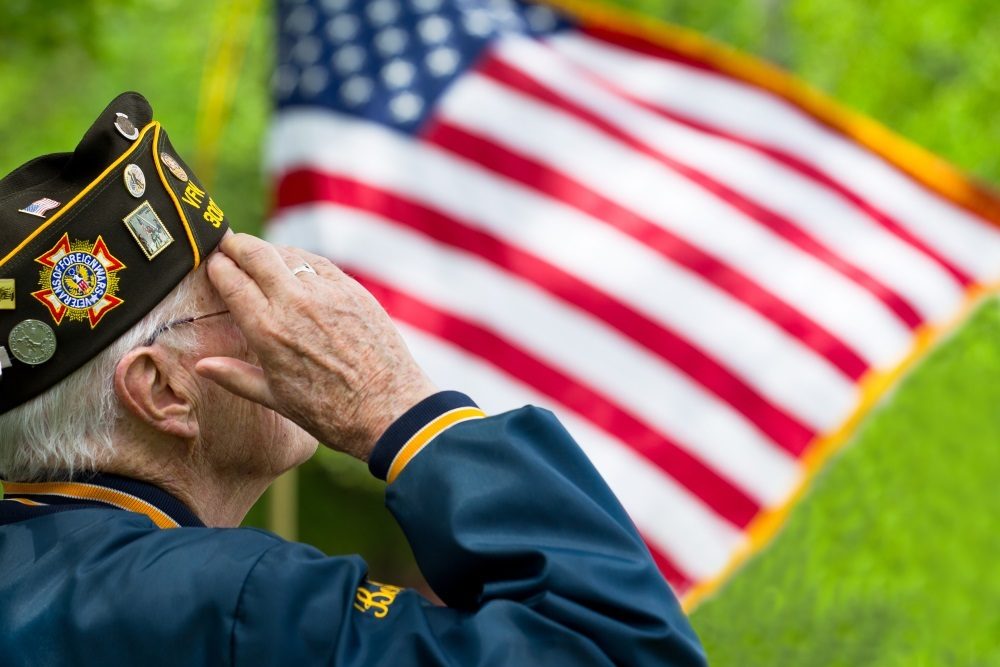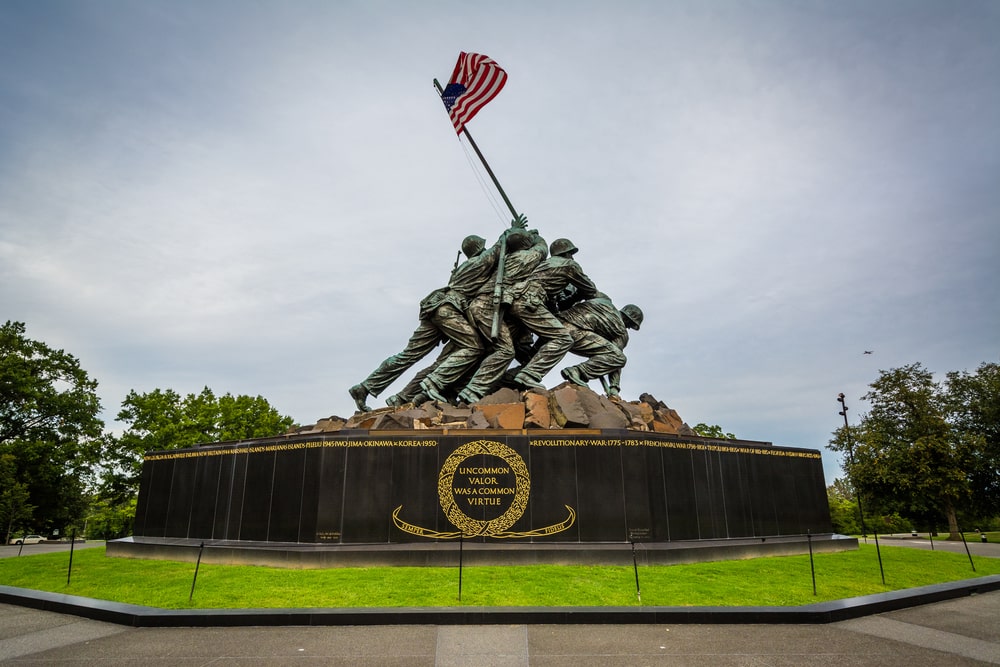
“Among those who served on Iwo Jima, uncommon valor was a common virtue.” – Fleet Admiral Chester W. Nimitz
Memorial Day is a day set aside every year to honor and remember the many men and women who have died while serving the United States of America and its people. As we seek to honor them, let us remember them and the great sacrifices they made to preserve life, liberty, and the pursuit of happiness.
Marine Corps War Memorial
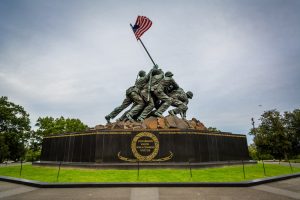
Also known as the Iwo Jima War Memorial, the Marine Corps War Memorial is dedicated to the lives and memory of all Marines who have given their lives in service to the United States since November 10, 1775. A commanding presence, the monument rests on a 7 and ½ acre tract of land approximately 100 feet above the Potomac River. While the monument honors Marines across nearly three centuries, the statue depicts events from Iwo Jima during World War II, a much-contested island during the battle for the Pacific.
How It Came to Be
After the end of World War II, Congress commissioned a memorial to honor the United States Marine Corps. During the Battle for Iwo Jima, six Marines hoisted an American flag atop Mount Suribachi, and photographer Joe Rosenthal of the Associated Press captured the iconic moment. The photo went on to win a Pulitzer Prize and became an inspiration for the Marine Corps War Memorial.
It took sculptor Felix de Weldon nine years to complete the project (1945-1954). Using a design created by Horace W. Peaslee, de Weldon first created the statue in plaster before taking it to Brooklyn, N.Y., for casting in bronze. The casting process alone took three years to complete. Once cast, the disassembled pieces were taken to Washington, D.C., where they were bolted and welded together. To make the statue as realistic as possible, de Weldon even modeled the faces of the men after the original flag-raisers. He was able to cast the faces of two of the surviving flag raisers faces in clay. He also scoured available pictures and records for the likenesses of the remaining four flag raisers.
The total cost of the memorial was $850,000, paid for with private donations from Marines and friends of the Marine Corps. President Dwight D. Eisenhower dedicated the memorial on November 10, 1954, the 179th anniversary of the U.S. Marine Corps.
The Story Behind the Marine Corps War Memorial
The island of Iwo Jima was considered strategically important during the Pacific theater of World War II. It was valuable for its ability to support long-range bombing missions against mainland Japan. Additionally, the Allies planned to use the island for sea and air blockades, intensive air bombardment, and a greater ability to destroy enemy air and naval capabilities.
The fighting began on February 19, 1945, and lasted 36 days. One regiment – the 28th Marines – sought to capture the extinct volcano Mount Suribachi. They did so on February 23, and as a result, there were actually two flag raisings. The first occurred on the morning of February 23 when the Marines first took the volcano, but the American flag was very small. As a result, Marines fighting all over the island couldn’t see the flag and gain encouragement from it. For that reason, later that same afternoon, six Marines hoisted a larger American flag in its place. It is this second flag raising that photographer Joe Rosenthal captured and became the inspiration for the Marine Corps War Memorial.
The six flag raisers were:
- Corporal Harlon Block
- Corporal Harold Keller
- PFC Ira Hayes
- PFC Harold Schultz
- PFC Franklin Sousley
- Sergeant Michael Strank
For many years, Rene Gagnon was believed to be one of the six, but the Marine Corps has since corrected that. However, Gagnon did play a major role. He carried the larger flag to the summit and then brought the smaller flag back down.
By the end of the fight for Iwo Jima on March 26, nearly 7,000 Marines had lost their lives. Amongst their number were Sergeant Strank, Corporal Block, and PFC Sousley. But the courage and determination of the Marines live on through the gratitude of an entire nation and the creation of the Marine Corps War Memorial.
Marine Corps War Memorial Statistics
- The figures are 32 feet tall.
- The bronze flagpole is 60 feet tall.
- The flag flies 24 hours a day, 365 days a year.
- The figures occupy the same positions they did in the iconic Rosenthal image.
- The M-l rifle and the carbine featured in the statue are 16 and 12 feet long, respectively.
- The canteen would hold 32 quarts of water.
- The figures stand on a rock slope above a granite base. The granite came from Sweden.
- The entire memorial is about 78 feet tall.
- The names and dates of every principal Marine Corps engagement form a gold ring around the base.
Why Do We Have Memorials?
Permanent memorials ensure a lasting tribute for those who have been loved and lost. They also allow us, as people, to honor those we wish to always remember. Just as we create memorials for our heroes, we also create them for our loved ones. There are five key reasons why permanent memorials are important, whether commemorating an event, a group of people, or just one person, like a close loved one.
- A permanent memorial provides a place for people to mourn.
- It gives all mourners (not just family) access to pay respects and connect with those who have died.
- It provides a permanent place that will exist for generations to come.
- A permanent memorial allows people to remember and reflect on lives lost.
- It ensures that the dead are remembered and respected.
Large-scale memorials, such as the Vietnam Veterans Memorial or the World War II Memorial, honor an entire group. However, for individuals, families set headstones, grave markers, or inscriptions in place. Both types of memorialization are important and honoring to our veterans and our loved ones.
Want to Get Involved?
If you’d like to honor the Marines, consider volunteering with or donating to non-profits that support Marines and their families. A few reputable organizations to check out are the Marine Corps Association, the Marine Corps League Foundation, Semper Fi & America’s Fund, and the Marine Corps Scholarship Foundation.

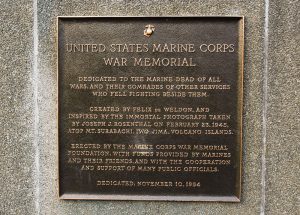
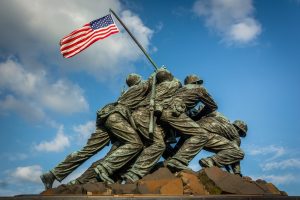
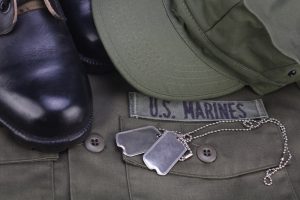
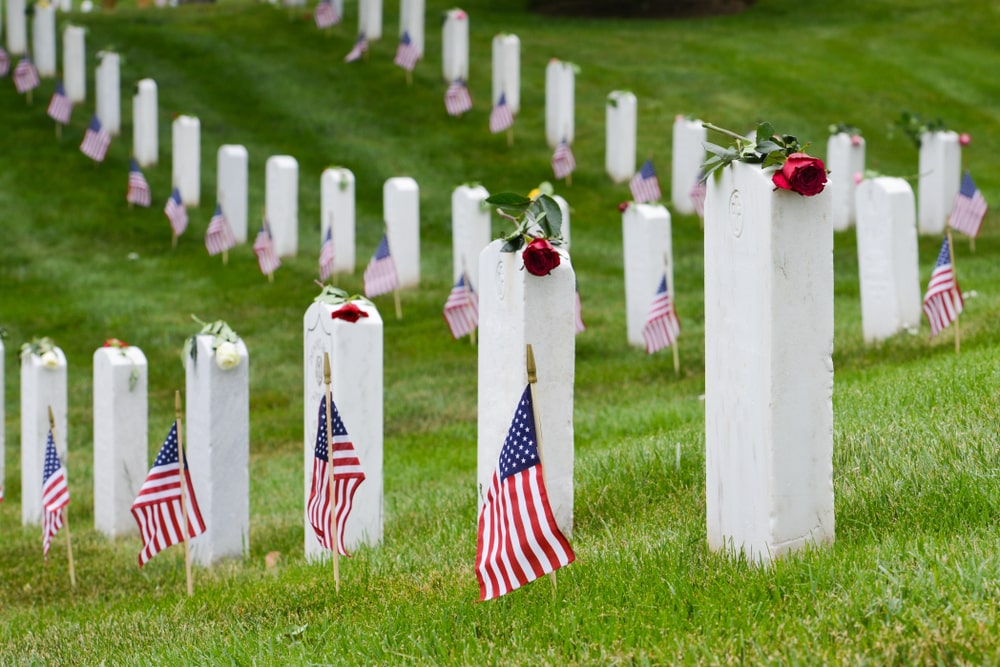
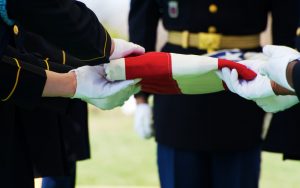
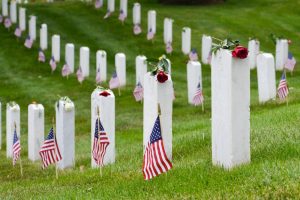
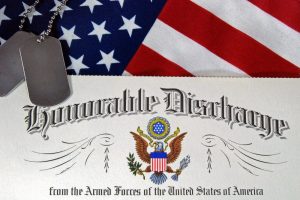
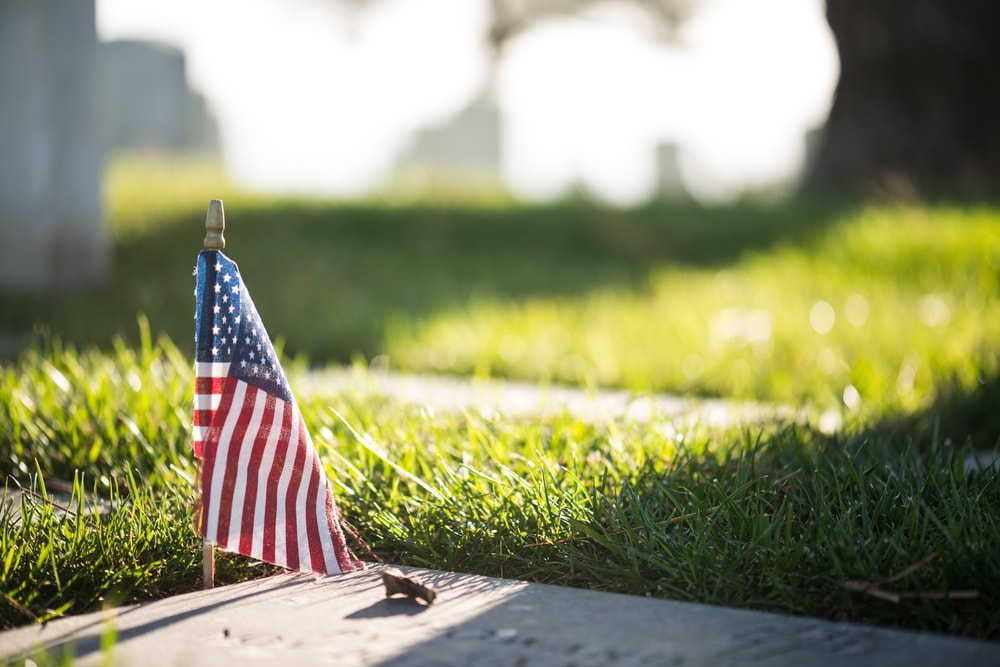
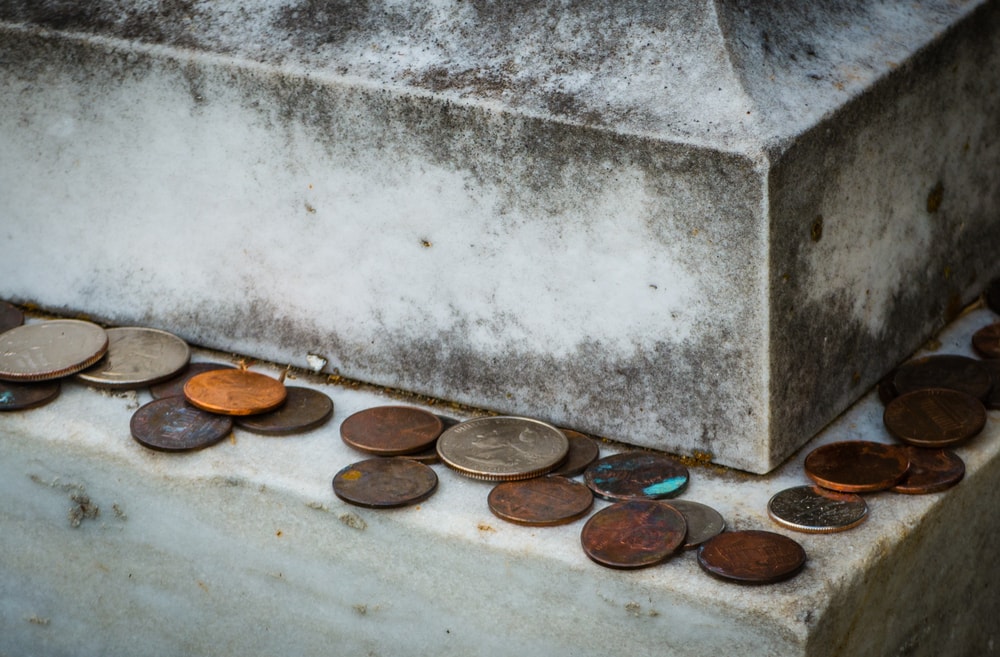
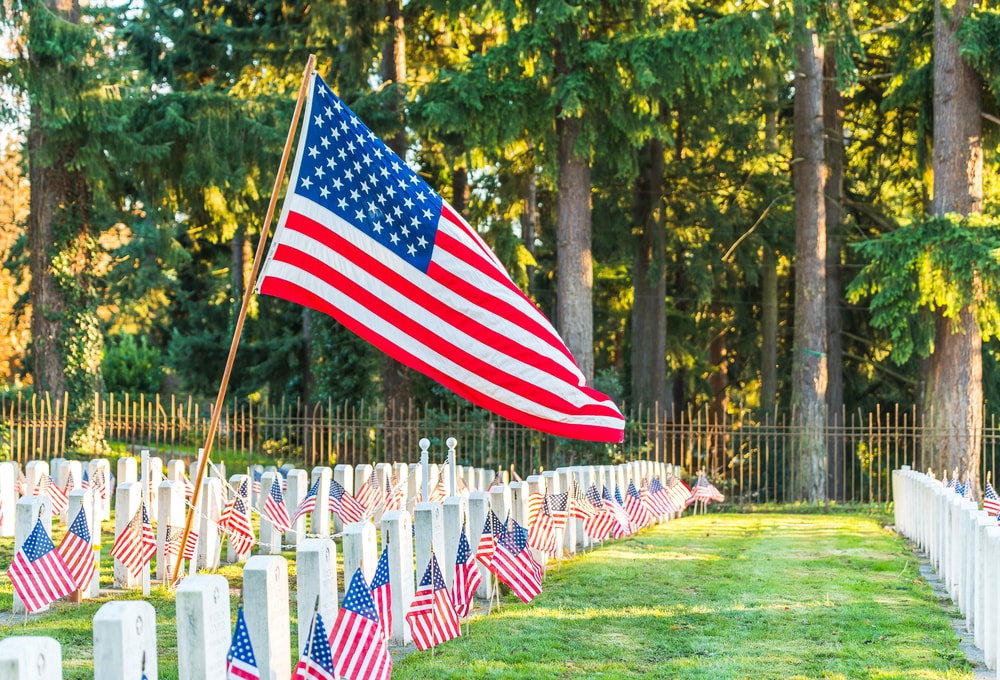 For veterans buried in private cemeteries, any coins are subject to the regulations of the individual cemetery. Many cemeteries collect the coins and use them to maintain the cemetery grounds.
For veterans buried in private cemeteries, any coins are subject to the regulations of the individual cemetery. Many cemeteries collect the coins and use them to maintain the cemetery grounds.

